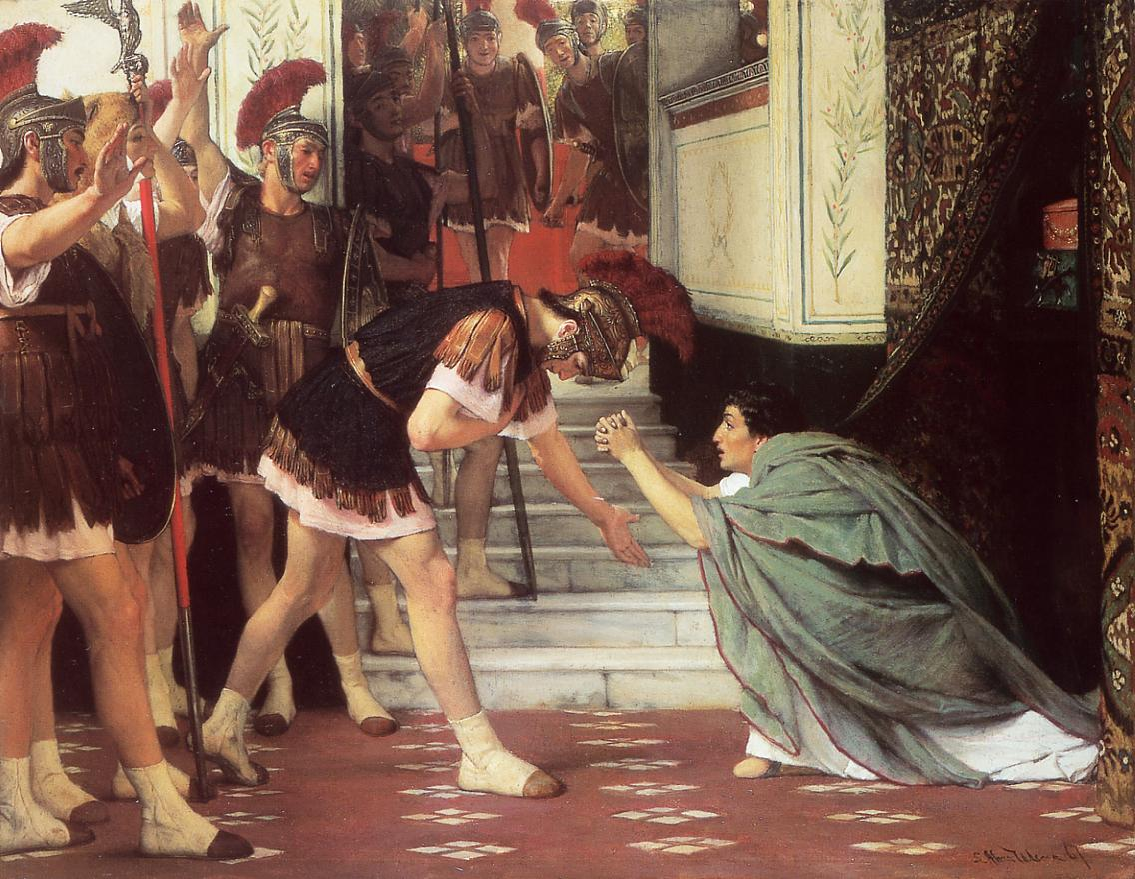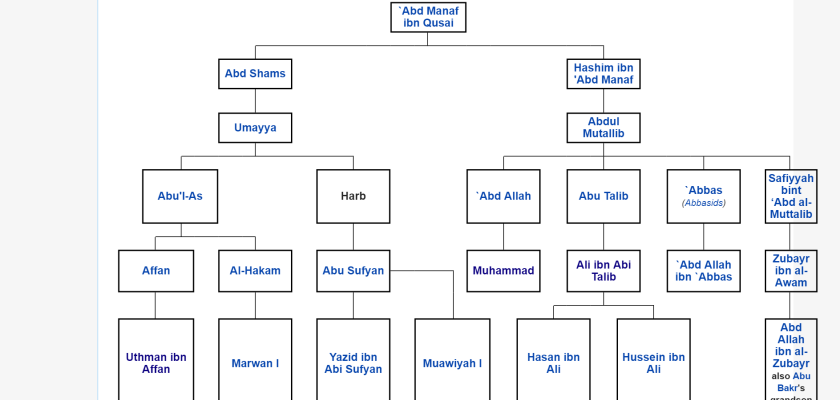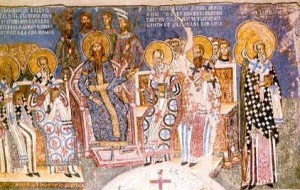As Augustus became the first Roman Emperor in 27 BC, many changes came to the government, among which was the establishment of an imperial bodyguard – called the Praetorian Guard. The Praetorians were considered among the most elite units of the Roman military, but their existence posed a few problems for the emperors, for the Praetorians were typically more loyal to their own officers than they were to the emperor.
Augustus’ successor, Tiberius, was wisely wary of the Praetorians. He recognized them as his predecessor’s men and reduced their numbers, moving their quarters outside the city limits of Rome. Tiberius’ contemporaries dismissed him as paranoid (and they were right about his being too paranoid, just not on this point), but Tiberius’ successor, Caligula, would prove him right on the Praetorian Guard.
Now, there were a lot of things wrong with Caligula, so maybe it’s not really fair to blame the Praetorians for murdering him. After all, the man who calls himself a god, turns the palace into a brothel, deliberately wastes money on things, murders for amusement, and takes a romantic interest in his sister is probably not the sort of guy who should be running the most powerful country in the world. Even despite all these things, the Praetorians didn’t say anything. They drew the line at Caligula wanting to make his horse (in whom he allegedly also had a romantic interest) a consul, which would have made the animal their commanding officer – at least in name. Caligula was talked down from making his horse a consul, settling for making it a priest (even the emperor has to compromise), but the damage to his relationship with the military, and particularly the Praetorians, had already been irreparably damaged. The Praetorians murdered Caligula on January 24, 41 AD, setting a dangerous precedent, for the emperors they would later murder were not all horse-lovers (okay, one of them was, but they didn’t technically murder him).
The Praetorians put Caligula’s not insane uncle Claudius on the throne after him, and according to most historians, it was a decent choice. Problems arose again when Claudius’ successor, Nero, killed his mother and started blaming the Great Fire of Rome on Christians (it pretty clearly wasn’t their fault). Rumors of horse-loving started floating around again, and the Praetorians abandoned Nero as Galba revolted in 68 AD. The following “Year of the Four Emperors” saw the Praetorians help Otho overthrow Galba after he had seized power, only to see Otho overthrown by Vitellius and his own army. Vitellius wised up to the Praetorians and disbanded them, replacing them entirely with his own men. The problem was that the Praetorians then went and joined Vespasian, another general who was staging a revolt (joke’s on you, Vitellius). Vespasian took power in 69 and reduced the size of the Praetorian Guard again, placing his son Titus in charge as Praetorian Prefect. Titus became emperor after his father, but he passed away a couple of years after a remarkably unhappy reign, which saw some dispute as to who would be his successor.
The Praetorian Guard solved this dispute by putting Domitian, Titus’ brother, on the throne, only to have some level of involvement in his murder fifteen years later (they at least didn’t seem to interested in preventing it). The next handful of emperors are commonly referred to as the “Five Good Emperors” and symbolize the peak of the Roman Empire. From 96 to 177, there was essentially no disputing the pre-eminence of the Empire, but after Marcus Aurelius’ death, his son, Commodus took the throne.

So… Commodus was either crazy or just a jerk. Either way, the Praetorians weren’t fans of the guy who insists on being called, “Lucius Aelius Aurelius Commodus Augustus Herculeus Romanus Exsuperatorius Amazonius Invictus Felix Pius.” It’s a mouthful, and it’s also hard to only refer to someone with pronouns to avoid having to say a name that long. When that guy starts telling people he’s a demigod and likes to fight rigged gladiatorial battles, you draw the line. The Praetorian Prefect Laetius helped murder Commodus in 192, whereupon Pertinax was put in office. The Praetorians decided they didn’t like Pertinax a few months later and auctioned (yes, auctioned) off the throne to Didius Julianus. They killed him three months later, but before they could sell the throne again, the Spanish-born general Septimus Severus took the throne by force and replaced the Praetorians with his own guys (wise move, Septimus). Septimus Severus was the first non-Roman to have taken the throne by force, and you know, the Romans didn’t seem too upset about it after having had good old “Lucius Aelius Aurelius Commodus Augustus Herculeus Romanus Exsuperatorius Amazonius Invictus Felix Pius” and the guy who bought the throne in power for the last fifteen years.
Septimus Severus was better than his predecessors, but he still likely contributed to the Crisis of the 3rd Century, in which the Roman economy collapsed and Germanic tribesmen ravaged the frontiers with increasing impunity. The crisis ended with the rise of the emperor Diocletian, who reorganized the Empire into four main administrative areas in a system called the Tetrarchy. It’s hard to deny that Diocletian was a turning point for the Empire, and under him, the Praetorian Guard began their final decline while the Empire recovered. Diocletian removed the Praetorians from the palace in 284, and by the time of his abdication in 305 (the only Roman Emperor to do so), the Praetorians were simply a part of the city guard in Rome. The following year, the son of the lieutenant emperor in the West, Maxentius, brought the Praetorians back one last time, as he contested the succession of Constantius Chlorus as Western Emperor. After Maxentius’ defeat at the hands of Constantius Chlorus’ son, Constantine, at the Battle of the Milvian Bridge in 312, Constantine marched into Rome and disbanded the Praetorian Guard permanently.
A definition of insanity is “doing the same thing over and over again and expecting a different result,” and the dogged commitment to having the Praetorian Guard as the personal protectors of the Emperor certainly fit this definition. Look, I’m no expert on this, but if the Secret Service murdered several Presidents in a row, maybe we would try something else, but the logic seems to have been that the Empire was doing so well in spite of the Praetorians, who eventually integrated themselves into the imperial tradition itself, that it was better just to live with them than to risk the unknown consequences of dissolving the unit. In retrospect, a Roman Empire without the Praetorians might not have had to endure the Crisis of the 3rd Century, which irreversibly damaged the Empire. Hypotheticals aren’t the business of the responsible historian, but it’s fair to wonder as to what might have occurred without the Praetorians, or if Vespasian would have simply removed them after the Year of the Four Emperors, rather than trying to reform the corrupt institution.




